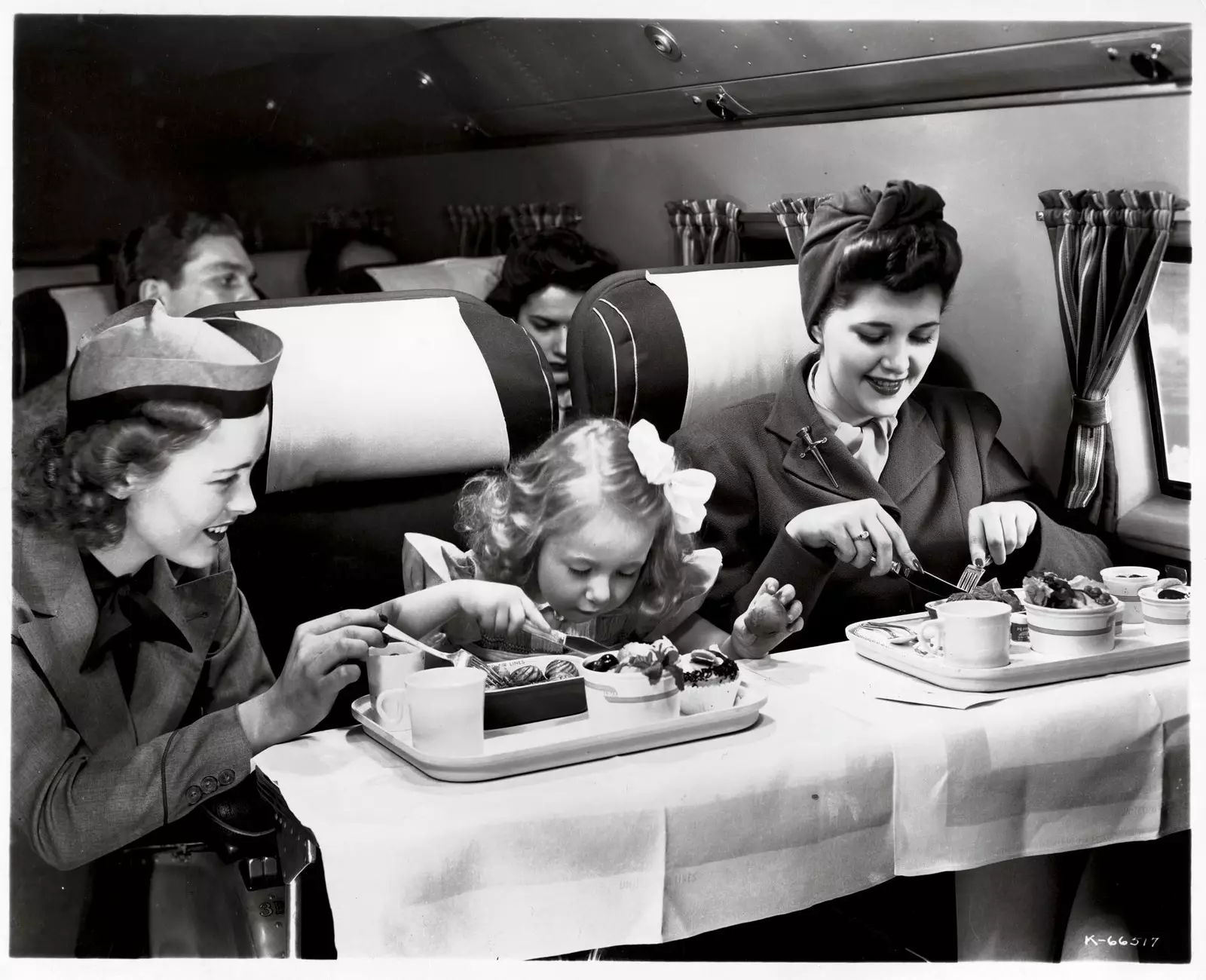
Promotional photo of the time
There was a time when airplanes had a dining room. In that the menu for all passengers included lobster, crab cocktail, foie gras, ox tongue and even a dessert of peaches with raspberry sauce.
where there was flowers on the tables, fancy tableware and hot towels for everyone diners. Gifts were even given to passengers.
There was a time when eating on board was quite an experience, although the competition between companies also led to somewhat crazy initiatives. This has been the evolution of the last hundred years since the first meal on board.
It was in October 1919 when the company Handley Page Transportation first served food on an airplane. "We don't have images from then," the journalist and culinary historian explains. Richard Foss – but we keep the menus."
"It was on a journey from London to Paris and on that occasion it was just a sandwich and a soft drink. They did it because it was a two and a half hour flight, the airports were far from the cities and there were no restaurants or cafes," he says.
"They had to compete with trains and ships and offer more than just speed. But as soon as other companies started doing the same thing, the quality and variety of the menus improved immediately ”.
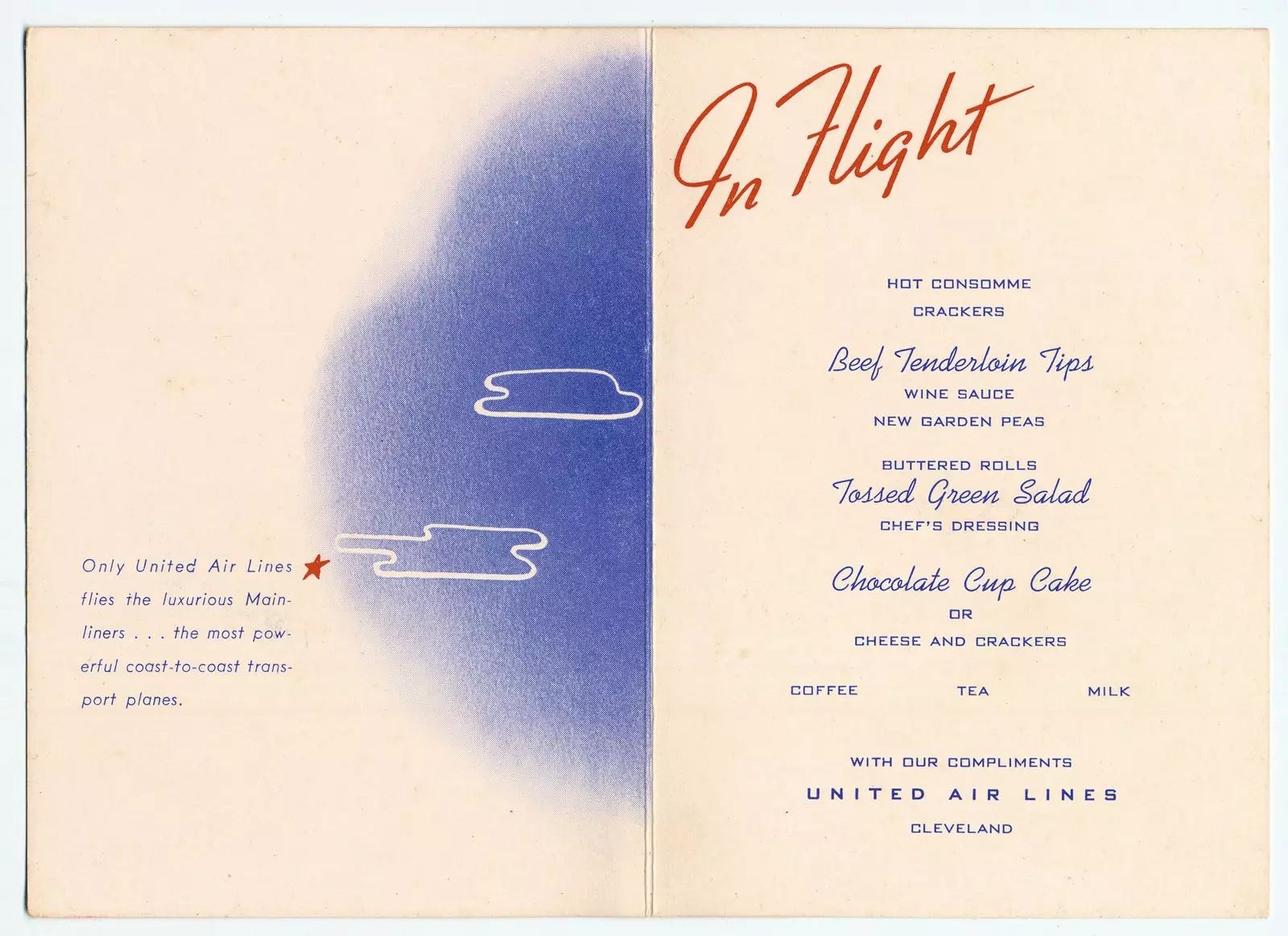
Menu? aboard United Air Lines in the 1950s
In the 1920s it was all about cold foods, like assortments of cheeses, salads and even champagne. In the mid-30s, with fitted kitchens already on board, roast meat could be served during the flight.
On some occasions, if the journey was long and the plane had to refuel, food was served during the stop in the airline hangar or on picnic tables where necessary.
Foss explains in his book, Food in the Air and Space: The Surprising History of Food and Drink in the Skies , that at that time the flight from London to Australia was made with Imperial Airways and Qantas and took 12 and a half days!
There were many overnight stops, four plane changes and even a small section that was done by train. But in total it was much faster than the 44 days it took by ship.
In the 1940s, the appearance of frozen food was a revolution not only to offer more variety, but also to eliminate the large amount of waste that was created when a flight was canceled or delayed.
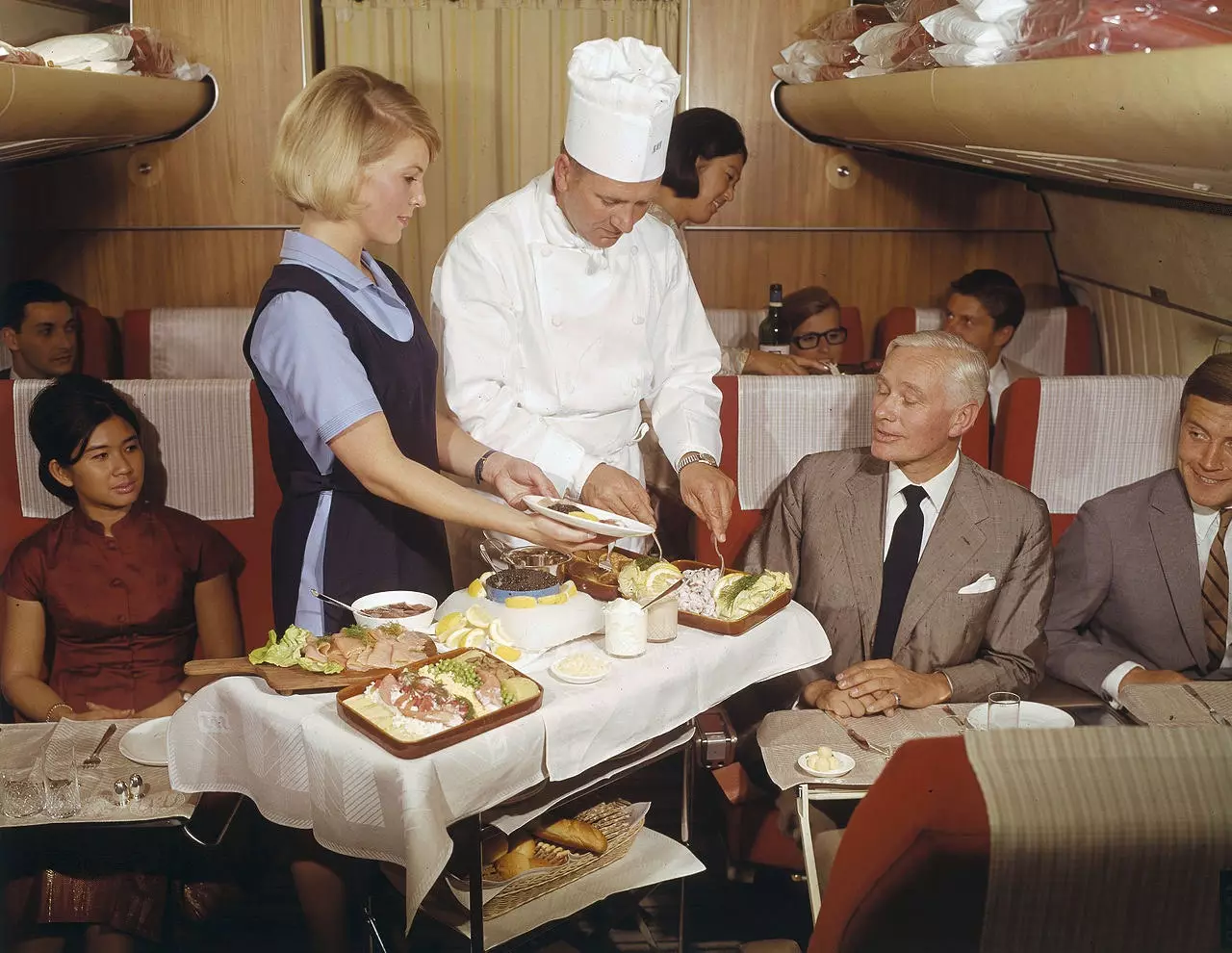
A chef and a stewardess serve food to first-class passengers on a SAS, Scandinavian Airlines System, flight in 1969
But let's go to the curiosities, because a hundred years have gone a long way. One of the weirdest things ever seen, this culinary historian tells us, was the Hunt Breakfast.
"As if they were English huntresses, Western Airlines stewardesses wore red coats and black hats during breakfast and they walked around the cabin carrying horns while blowing bugles and barking.
A service that became tremendously popular and ended after the Federal Aviation Administration forced them to remove the recording.
The company had already taken the initiative serve champagne in 1952 , when most airlines did not offer any type of alcohol and even, to compete with United, decided give cigarettes to men and perfume to women.
Another company, in this case the northwest , chose to promote its Asian routes decorating the plane with Japanese motifs and naming its downstairs cocktail lounge the 'Fujiyama Room'.
there was even a bonsai on the access stairs. The star starter was a tray of canapés with pineapple, prawns, cherry tomatoes, ham and different types of fruit. Then followed by lobster, consommé, duchesse potatoes, rye bread, onion rings... an un-Japanese assortment, sure, but it worked for their tagline, You Done the Best When You Fly Northwest.
Also in the 1950s, Lufthansa decided to offer beer directly from a barrel. And already in the 60s he established the practice coinciding with the Oktoberfest. In the 70s, Japan Airlines premiered its Teahouse in the Sky with the intention of recreating, as other companies did, the atmosphere of their country, with the stewardesses dressed in traditional dress and the interior of the plane decorated to match.
Foss says that those were the best years at the catering level, “Since then the technology to prepare food and companies really competed to offer the best. In the 1980s, deregulation eroded quality and many airlines chose to make flying cheaper rather than more enjoyable.
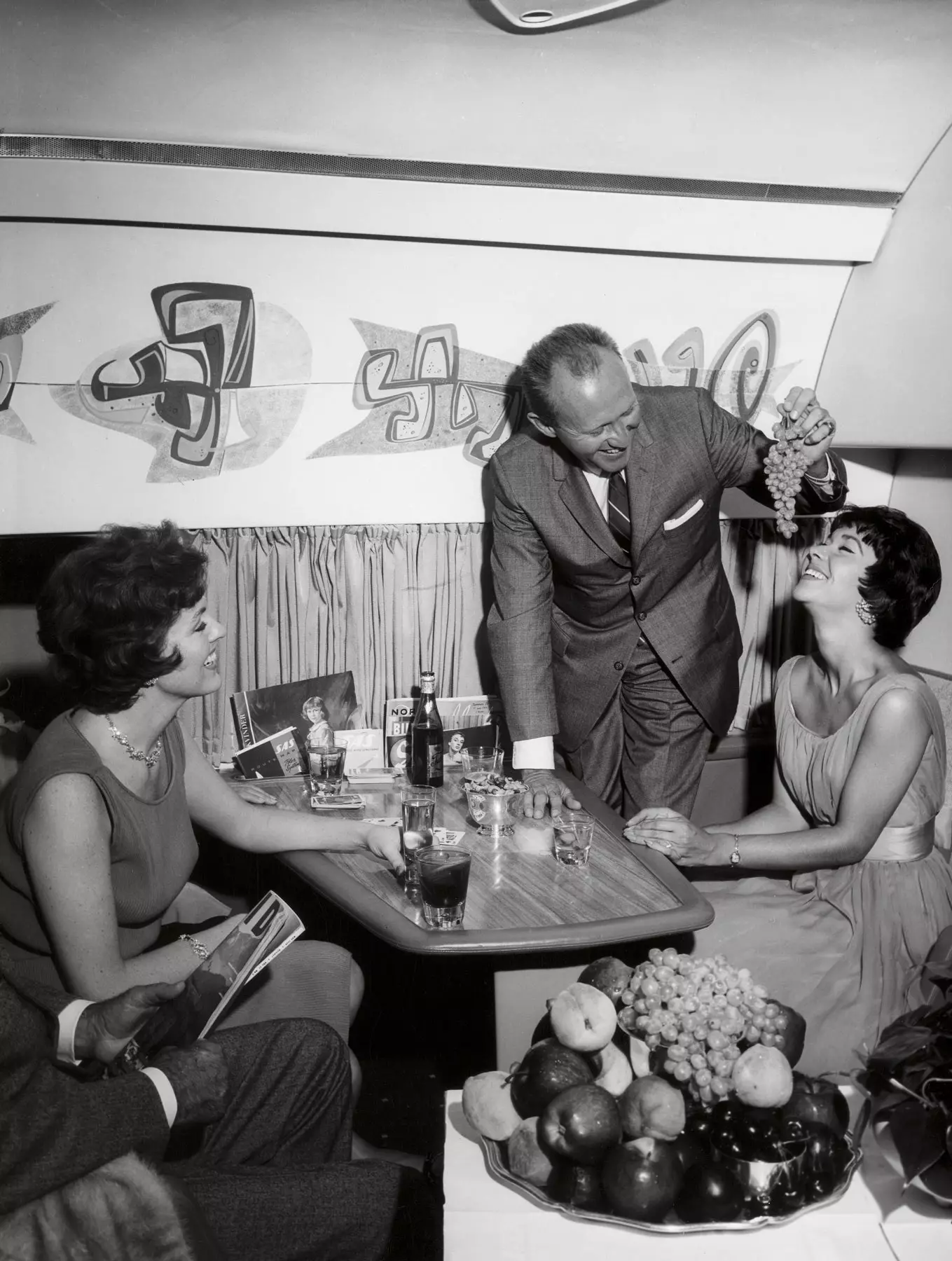
The exaltation of hedonism and luxury was required when promoting the excellence of the service on board. In this sense, SAS was one of the pioneers
Nik Loukas is another person who knows this world well. She has taken 615 flights, has been to 153 airports and now premieres the documentary The Inflight Food Trip , "a trip - he tells us himself - around the planet visiting airlines and caterers to see how these menus are prepared".
In 2009 he was working for an Australian airline and knew first-hand about passenger complaints. He thought that there should be a website where people know what companies offer and he spent 6 months traveling the world looking for information before launching inFlightFeed.com.
Among the worst experiences, he remembers “a hard croissant” served for breakfast on an Air India flight from Delhi to Paris, “overcooked eggs and poor quality” from Air Serbia, or “a sad chicken burger swimming in brown sauce” of Ukrainian International Airlines.
He has also tried curious things, like the 'Hello Kitty' pack for children from Eva Air or the KFC menu that Japan Airlines offered for two Christmases in a row, in 2012 and 2013.
"A thigh, a boneless chicken breast fillet , a coleslaw, a roll and some lettuce leaves, in addition to the special mayonnaise”, they explain to us from the company.
Last year also collaborated with a French wine producer to serve an original cuvée and celebrate 160 years of diplomatic relations between the two countries. But his priority is to offer traditional Japanese food and that's why They usually work with renowned chefs in the country.
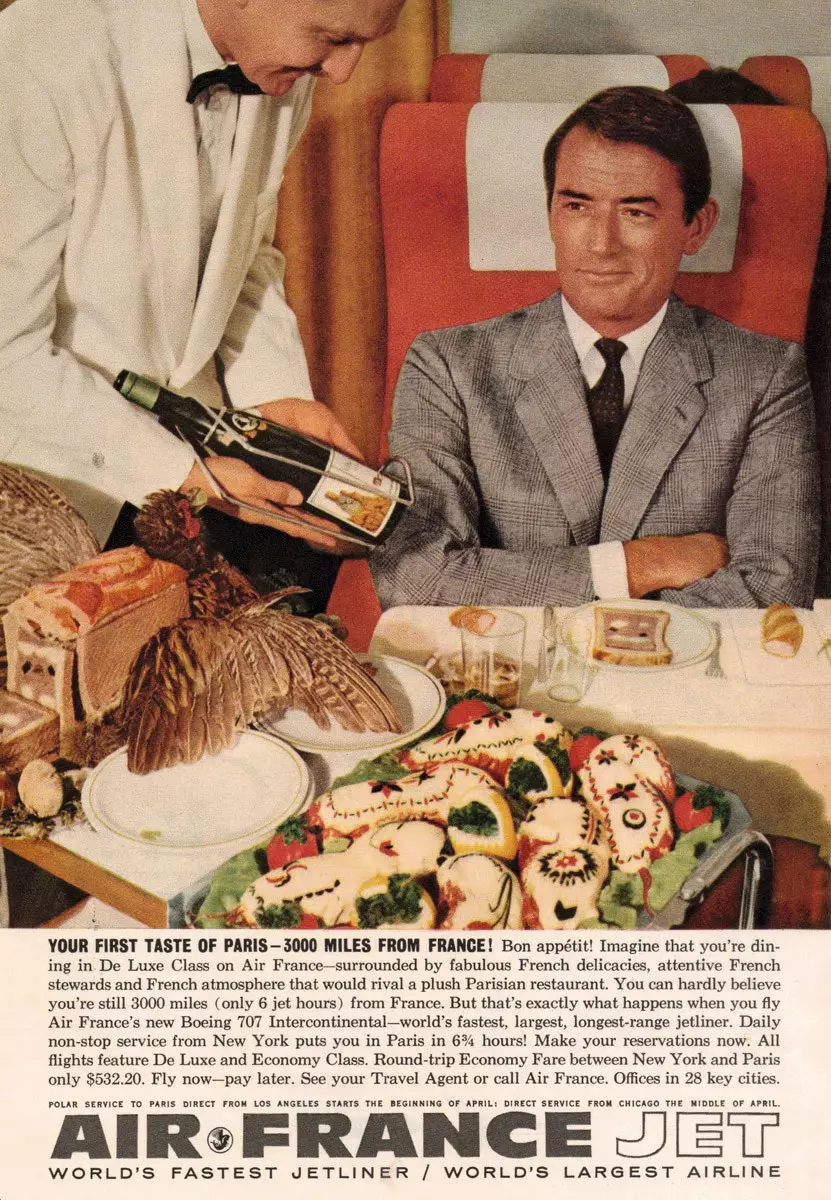
Gregory Peck was the image of Air France in 1960 to promote the excellence of its food on board: 'Your first taste of Paris'
We asked Loukas about his favorite companies, and he is also clear: Austrian Airlines “for your pre-booking service”, air France “for being so chic and so French”, Japanese Airlines “for the taste of the food” and Swiss and Agean “for being good ambassadors of the gastronomy of their country”.
In the case of Austrian the pre-booking is done through the DO&CO à la carte service, that offers up to 9 different menus to choose from and to which the so-called Flying Chefs that it has on board give the final touch.
In total the company served 3.7 million meals on its flights departing from Vienna in 2018 and many of them were able to prove their Flying Coffee House , a selection of 10 Viennese coffee specialties on board.
Another name to keep in mind is Emirates. Its Emirates Flight Catering facilities in Dubai are the largest in the world, serving 225,000 daily meals.
Joost Heymeijer, Senior Vice President Catering, gives us some more figures. “In 2018 we served 1,441 tons of potatoes, 61 tons of strawberries, 72 million baked rolls, 188 tons of salmon and 38 tons of broccoli.” Among its star dishes "the Emirati Machboos (a traditional dish based on spiced rice), the selection of Arab mezze or the date cake”.
But they also prepare special dishes on the occasion of, for example, Chinese New Year or Oktoberfest and on their flights from Spain this year they offer chicken in marinade and also Catalan style chicken.
There are even companies that have dared to publish their recipes. In 2006, the workers of southwest Airlines they published a cookbook to celebrate their 35th anniversary. Hawaiian Airlines, American West and Delta they did it a few years before. And now it's been United Airlines who just posted his Polaris Cookbook , with 40 recipes from among the first-class menus.
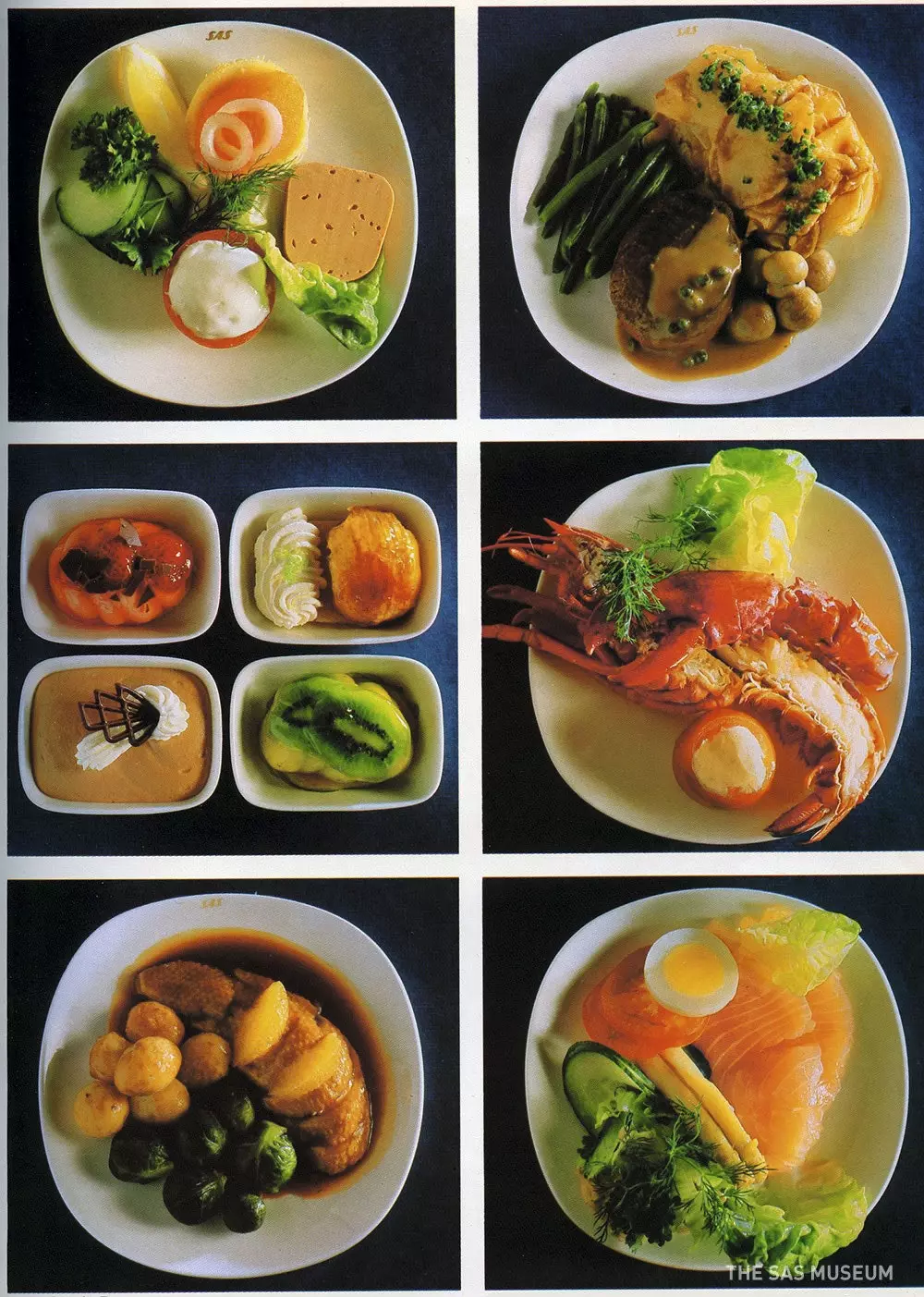
Different gastronomic proposals of SAS in the 60s
But sometimes an excellent dish doesn't work at 10,000 meters. The lack of humidity, low pressure and even noise can harm the smell and taste of the most exquisite.
you know it well charles spence , Professor of Experimental Psychology at the University of Oxford. For years he has been researching the relationship between the senses and what we eat.
In the case of airplanes, it is calculated that food can lose up to 30% of its flavor when taken in the air.
Spence points out to Traveler other factors to take into account: “the low quality of the cutlery, the little description in the name of the dish –that “chicken or pasta?”– and even the stress or anxiety that some suffer during the flight makes us have a rather poor feeling of what we are doing”.
And this affects the taste we perceive. The salty and sweet ones are the most affected, the spicy, bitter and sour ones remain intact, and –attention because here comes the curious part– the umami is enhanced. And where do we find it? Well in the tomato juice that so many people order on planes and never on the ground.
also wears it the Worcester sauce that is used for the Bloody Mary and even the Parmesan , but Professor Spence alerts us:
“It is true that this cheese is rich in umami and therefore should be good at height. However the isovaleric acid , one of the key components that gives it this particular aroma, can also be found in sweaty socks or vomit. So while those who eat it may enjoy the taste, those around you may need vomit bags.”
And in fact this is what happened at Virgin Australia when they decided to do a menu change and introduce parmesan sandwiches. Odor complaints from passengers prompted them to immediately remove this sandwich from their menu.
To combat these problems, some companies have chosen to design specific products to serve on board.
“SAS has for many years offered a special beer for the journeys. British Airways joined forces with Twinings to create a tea that tasted good also in the heights , since one of the problems is that on board the water boils at 89 degrees and not 100. And Cathay Pacific had its Betsy Beer, a craft beer to enjoy mid-flight”.
Although according to the different studies collected by Spence what works for sure are crispy products –crispy, crunchy and crackly– and Asian and spicy flavors.
The frozen , some research suggests, is another good bet. And about the wines, better the fruity ones.
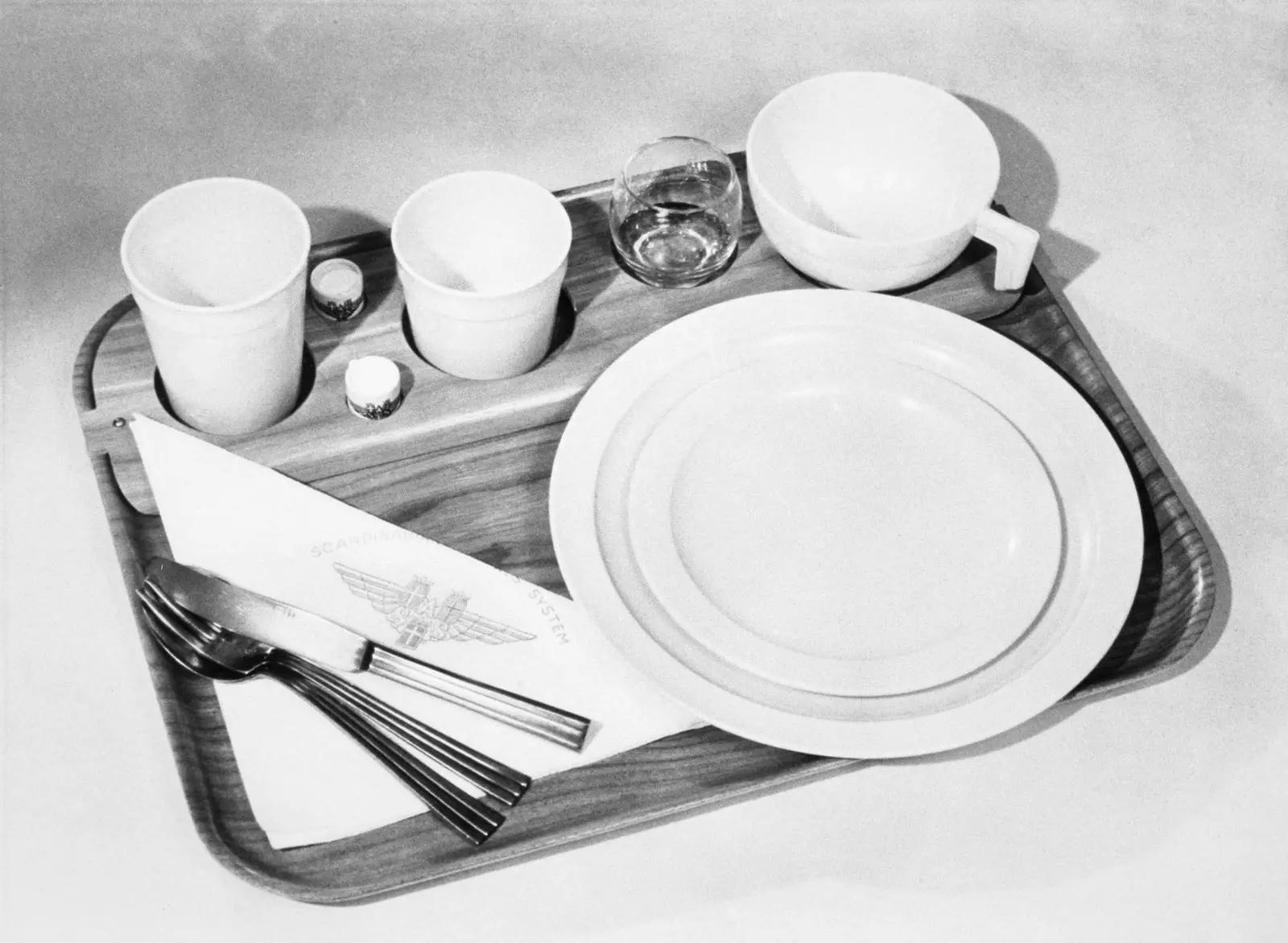
Little by little, food is once again among the priorities of airlines
And in the future... It seems that in general companies are worrying about this issue again and they are making some changes. It is promoting, for example, the possibility of reserving the menu before boarding the plane, which allows you to choose between more options and reduce waste.
Companies like Delta have already started up with cutlery, partners with Alessi want to offer customers a better experience on board and in November they will launch their new service, 'Main Cabin'.
Christian Hallowell, General Manager of Food and Beverage, tells us that “There will be a welcome cocktail, Bellini type. We will then offer a choice of appetizer, main course and dessert. It will be like a restaurant, but in heaven. We want customers to feel valued and this is just one of the initiatives that we will launch”.
In companies like SAS they think of revolutionize the format and also make it more sustainable. In 2017 they already presented The Cube, a 10-centimeter cube where all the food has a place, knowing that many passengers do not want a three-course menu.
Gustaf Oholm, Head of Products and Services, acknowledges that "it makes no sense to load food that is not enjoyed on board." They work with locally sourced raw materials and seasonal products.
“It is a real win-win, because we are able to present amazing products to our customers and at the same time contribute to minimizing the carbon footprint ”.
Another consequence of working like this is that rotations in the menu are much more frequent , since they depend on the product, and this is highly valued by customers”.
It seems that, little by little, food is once again among the priorities of the airlines. Let's see what course it takes this time... and in a hundred years we'll talk again.
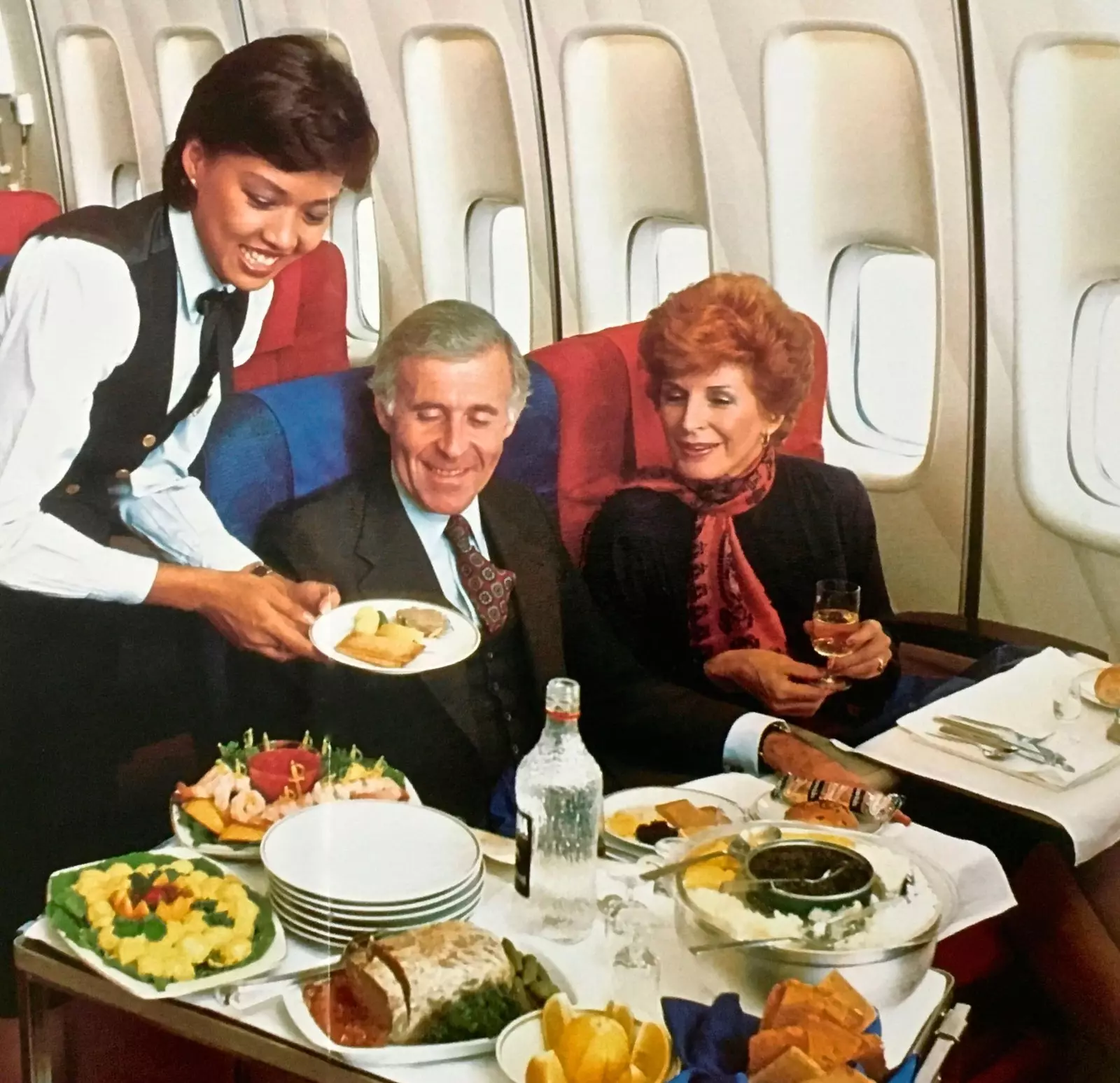
Chicken or pasta?
***** _This report was published in **number 132 of Condé Nast Traveler Magazine (September)**. Subscribe to the printed edition (11 printed issues and a digital version for €24.75, by calling 902 53 55 57 or from our website). The September issue of Condé Nast Traveler is available in its digital version to enjoy on your preferred device. _
